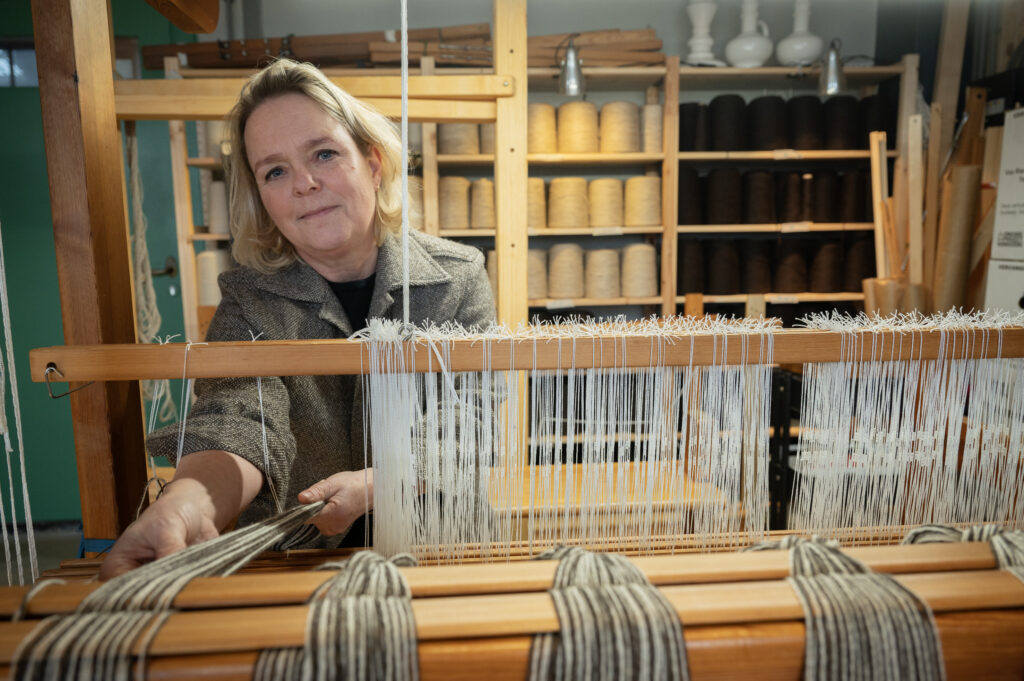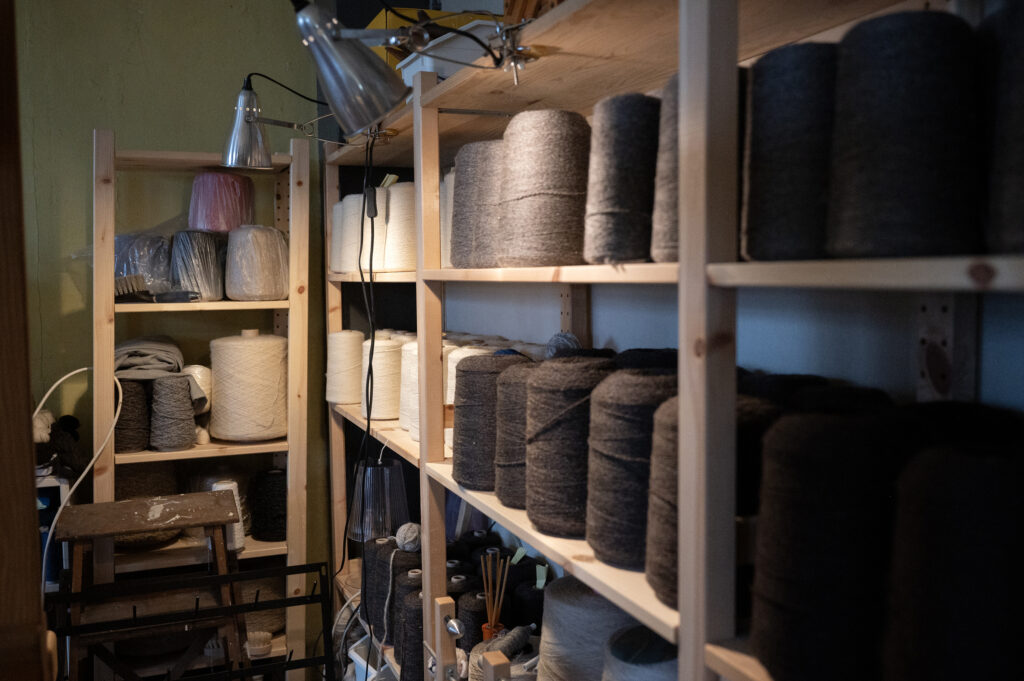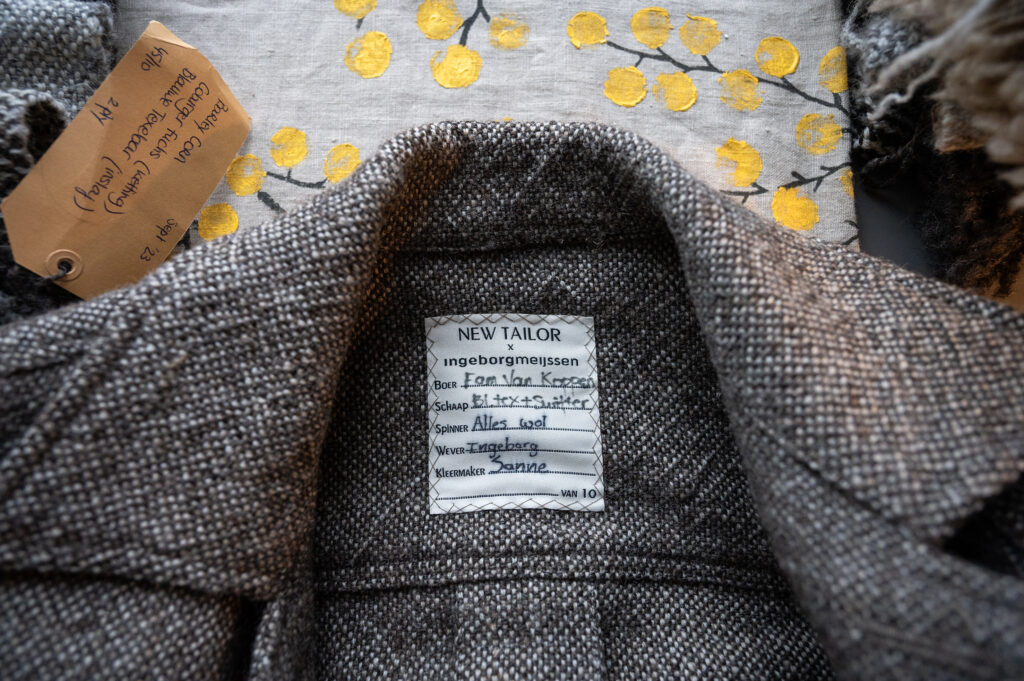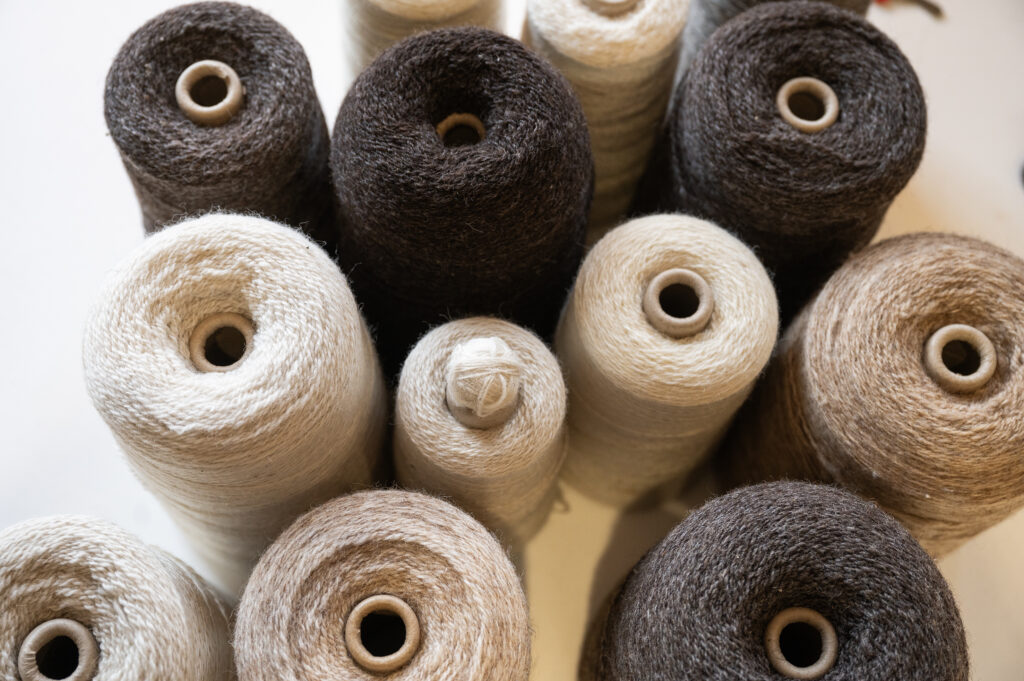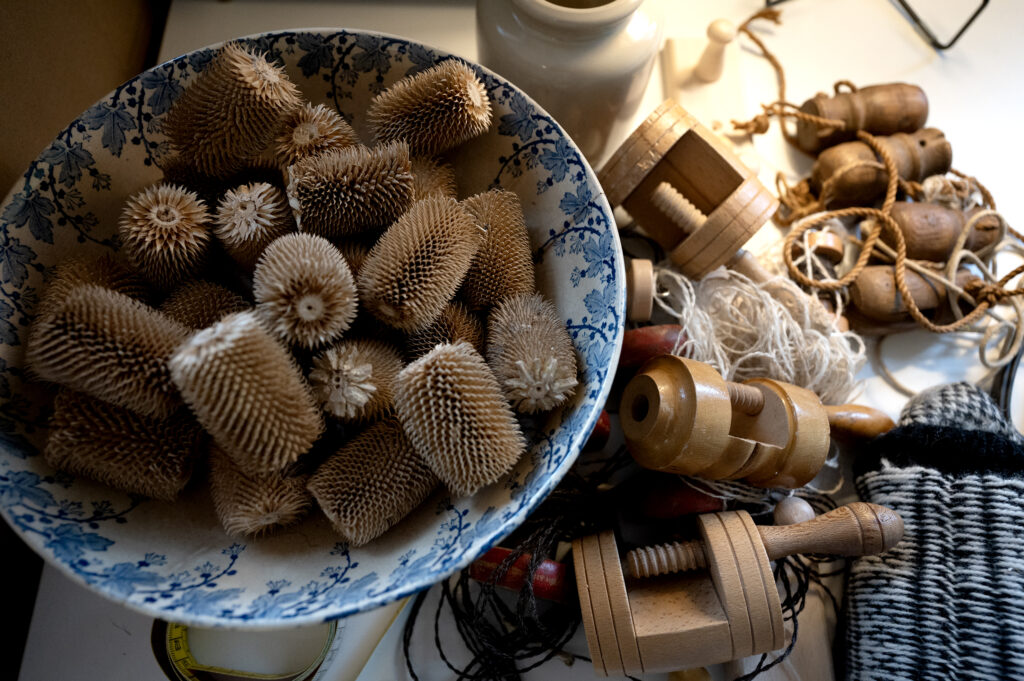July 24, 2024
INTRODUCING: Ingeborg Meijssen Textiles
"WEAVING WITH NATURE’S BEAUTIES"
Before Ingeborg started her weaving course in Amsterdam in 2017, she had worked for nearly twentyfive years as a lawyer in the Dutch and English financial sector. For the last 10 years, she ran her own consultancy, but something had been nagging at her for a long time: “I am far too visually and tactilely oriented for the work I was doing. I learned to knit from my grandmother when I was five and have always been busy with fabrics and yarns in my spare time.” When Ingeborg quit her own company in 2016, it was clear that she would find her passion in textiles, but the exact path was yet to be discovered. After some detours in (digital) pattern design, she had an epiphany during a ‘Rag rug weaving’ workshop at the Textielmuseum in Tilburg. She had never woven before, but in that one afternoon, she was hooked! She then followed a two-year weaving course at the Weefacademie Sytze Roos in Amsterdam. Now she is a professional weaver and textile-historical researcher.
“The two C’s of Circular and Creative apply very directly to me,” says Ingeborg. “Creative is obvious: I weave one meter fabrics for use in fashion and interiors. Circular because almost all the woolen fabrics I weave come from Dutch sheep. The fleeces of Dutch sheep are almost all discarded or destroyed because there is no longer a market for them. In the past, blankets were woven from them to sleep under, but since the introduction of the duvet in the 1980s, those blankets are no longer made. The Netherlands is a trading nation: if there is no demand for a product, we rigorously stop making it and sell all the machines. As a result, the entire textile industry and a lot of knowledge have disappeared from the Netherlands. And concerning wool, farmers are left with the fleeces of their sheep… Bizarre, in a time when we talk so much about circular and sustainable practices, sheep fleeces, which grow back every year, are simply thrown away.”
In 2018, Ingeborg began collecting fleeces from farmers across the Netherlands. She has the fleeces spun at one of the few spinning mills we now have again in the Netherlands. She weaves her fabrics from the yarns herself, on one of the beautiful old looms she has. In this way, she has managed to create her own Dutch circular products, from woolen fleece to final product. Her woolen one meter fabrics are somewhat ‘tweed-like.’ The company New Tailor, a men’s tailor business with shops in Utrecht and Amsterdam, makes beautiful outer jackets for men in their own atelier from the fabrics. Upon purchase, the jacket has not yet left the Netherlands. Recently, she also had a jacket made for herself; the longer you wear it, the more beautifully the fabric forms.
Atelier Gouwe Klauwe, a furniture upholstery workshop in De Pijp, uses her fabrics to upholster furniture. Because the 100% wool fabric is fire-resistant, breathable, anti-allergenic, and dirt-repellent, all qualities of wool that we have almost forgotten, it is extremely suitable as furniture fabric.
Additionally, Ingeborg is involved in a large project for developing and manufacturing plastic-free curtain fabric. Curtain fabric contains microplastics, which are harmful to our health and the environment. Instead, fabric is being developed from flax grown in the Netherlands and Dutch sheep wool. The wool makes the fabric flame-retardant, and the combination of linen and wool in one fabric is very beautiful.
She bought her first loom from her weaving teacher while still in training. The second loom came her way in a very special manner, Ingeborg says. “In my training, I had one male fellow student. He was older than I was. He had learned to weave in the 1970s from a Swedish lady with whom he lived in Sweden for a while. Once retired, he wanted to weave again and took the course at the same time as me. We got along well and regularly admired each other’s work. In the second year, he became seriously ill. Not long before his death, he called me and said: ‘When I am no longer here, something must be done with the loom from my Swedish ‘mother.’ I can only think that you will make beautiful things on it.’ And so, after his death, I received his cherished loom, and I regularly weave beautiful things on it.”
Her third loom has just been assembled and is one of historical value. It probably dates from the 18th century, and Ingeborg is busy making it functional with a furniture restorer. Once operational, she will use it to weave reconstructions as part of the PhD research she is conducting on 17th-century painting canvas. Ingeborg: “I have been working for about four years now, together with a paintings restorer from the Rijksmuseum and a professor of materials science from the UvA, on research into 17th-century painting canvas. How was canvas woven in the 17th century, by whom, and how did painters like Rembrandt, Vermeer, Frans Hals, and other great masters get the canvas on which they painted their paintings? Very little research has been done on this worldwide, even though painting canvas can tell us something about, for example, the original dimensions of a painting, whether two paintings belong together, or maybe once were a large painting, etc. A fascinating and art-historically important study!”
Since October 2023, she has taken up space in the Centrale Markthal: “I find it incredibly important that heritage is preserved and used. My work as a weaver is also a kind of heritage, and I often notice how unfortunate it is that knowledge and skills are lost if we are not careful with the buildings, materials, and people who can keep that heritage alive. And this also applies to the Centrale Markthal; for the building, the story, and the lessons we can still (or especially now!) learn from it.”
Photos by Chris van Houts
Website Ingeborg Meijssen
